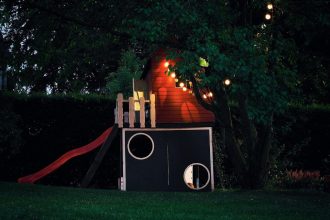When it comes to children and virtually everything related to them, you need to make any choice with extreme care, and children’s wallpaper is no exception to this rule. The health of your child directly depends not only on its nutrition, lifestyle, hereditary factors, etc. but also on the microclimate in the apartment or flat the child lives in, which is directly correlated with the quality and type of kids’ wallpaper. Therefore, when choosing wallpaper for kids, you need to consider the environmental friendliness and safety of the wallpaper for the kids’ room.
After all, the kid will spend most of his time and conduct various activities – sleep, play, study – in his room, right? So, what exactly to look for when choosing a kids’ room wallpaper? Let’s figure it out.
Choosing the children’s wallpaper
The composition
Thus, what kind of children’s wall mural should best be chosen? Parents often cast their decision on the paper kids’ wall mural. The reason is that this kind of mural for kids is the cheapest. Since children’s wallpapers have a very short lifespan, this choice will result in excellent savings for the family budget.
However, frequent cosmetic repairs in the children’s room, those associated with a short life of paper wallpaper, actually negatively affect the baby. In addition, having surroundings changed is a stressful event for any kid since they are already used to their native “masterpieces” on kids’ wall murals and furniture. A preferable alternative is non-woven, textile, or vinyl wallpapers. These types of wallpaper are highly hygienic and, therefore, environmentally friendly for the child.
Let’s then quickly reevaluate the wallpapers of different compositions:
Paper wallpaper
Paper wallpapers do not emit any harmful substances, allow walls to “breathe,” and do not accumulate dust. They are also pretty cheap and available in great variety.
On the other hand, paper wallpapers are hygroscopic (accumulate water from the air), so they can’t be used in moist areas. Furthermore, their weakness is their pretty short lifespan.
Non-woven wallpapers
Non-woven wallpapers are made from semi-synthetic material in which cellulose and polyester fibers interline. They “breathe,” harmless, and they are noticeably more robust than and not as afraid of water as paper wallpapers are.
However, they are way more expensive and suffer from the modest choice of colors and patterns.
Vinyl wallpapers
Parents should be very thoughtful when selecting this type of wallpaper. At first sight, the vinyl wallpapers are incredibly durable, can be glued easily, hide all the walls’ imperfections, and come with an abundance of color and pattern choices.
But – these wallpapers do not allow air to pass through, worsening the microclimate in the room, making it potentially harmful for a child. Furthermore, foamed vinyl is also dangerous: it crumbles, which threatens the children who naturally taste everything with a risk of poisoning.
Textile wallpapers
Textile wallpapers look very impressive, but it is hardly rational to choose this kind for a kids’ room. That is due to many reasons: to begin with, textile wallpapers are the costliest of the bunch – and any damage will result in ludicrous expenses; also, they accumulate dust and are not so easy to glue.
Color and design matters
The room allocated solely for the little inhabitant of your house is a place for him to learn about the world around him and always feel comfortable. Consequently, the color scheme of the wall murals for kids is essential.
According to psychologists, it is better for children under three years old to choose wallpaper in calm, pastel colors – peach, pink, yellow, light blue. It is also rational to avoid kids’ murals with large patterns – under stress conditions, like illness, high fever, or after watching a horror movie, a child’s imagination can perceive a monster instead of a drawing, scaring the kid gravely.
Also, it is unnecessary to cover all four walls with the wallpaper of the pattern. For example, a better choice is to paste over one wall with plain wallpaper, bright or, vice versa, dimmer compared to the general interior of the room.
Listen to your child
Bear in mind that a child over seven years old (in some cases – even earlier) can actually provide its own input when the decision of the wallpapers is taking place – and parents should listen to it carefully and try to adhere. After all, the child will be the sole inhabitant of the room where wallpapering is planned. Also, the eternal sunshine of a child’s spotless mind is not guided by any redundancies such as cost or modern fashion trends, so children are pure and open in their choice. As a result, they can better convey their character and mood than anyone else.
The impact of color on a child’s temperament
When choosing the color of the wallpaper in the kids’ room, consider your child’s temperament because each color, depending on your child’s character, will especially affect him. So, for example, with a choleric person (irascible, impulsive, unrestrained), warm colors will contribute to thoughtless, absent-minded behavior, while cold colors will cause restraint and humility.
On a sanguine person (friendly, mobile, cheerful), warm tones act as if lulling vigilance, weakening the degree of consciousness, and cold tones increase balance. For a phlegmatic person (patient, slow, self-possessed), warm colors are favorable in terms of intelligence, and cold colors cause detachment. Finally, on a melancholic (serious, insecure, withdrawn), warm tones have a liberating effect, encouraging contact, but cold tones only increase isolation in oneself.
Conclusions
In conclusion, we can add the following: try not to impose your point of view on the child, because next to you, in the next room, an individual personality is growing with its ambitions, desires, and worldview. And as an adult, your child will remember his room with warmth and tenderness, with nostalgia for a carefree childhood and the support of his parents.














